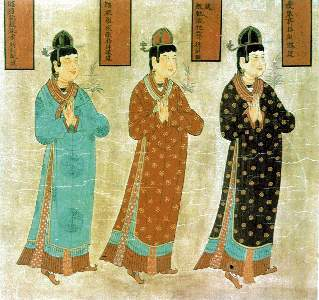|
Implicational Hierarchy
Implicational hierarchy, in linguistics, is a chain of implicational universals. A set of chained universals is schematically shown as in (1): (1) A < B < C < D It can be reformulated in the following way: If a language has property D, then it also has properties A, B, and C; if a language has a property C, then it also has properties A and B, etc. In other words, the implicational hierarchy defines the possible combinations of properties A, B, C, and D as listed in matrix (2): Implicational hierarchies are a useful tool in capturing linguistic generalizations pertaining the different components of the language. They are found in all subfields of grammar. Phonology (3) is an example of an implicational hierarchy concerning the distribution of nasal phonemes across languages, which concerns dental/alveolar, bilabial, and palatal voiced nasals, respectively: (3) < < This hierarchy defines the following possible combinations of dental/alveola ...[...More Info...] [...Related Items...] OR: [Wikipedia] [Google] [Baidu] |
Linguistics
Linguistics is the scientific study of human language. It is called a scientific study because it entails a comprehensive, systematic, objective, and precise analysis of all aspects of language, particularly its nature and structure. Linguistics is concerned with both the cognitive and social aspects of language. It is considered a scientific field as well as an academic discipline; it has been classified as a social science, natural science, cognitive science,Thagard, PaulCognitive Science, The Stanford Encyclopedia of Philosophy (Fall 2008 Edition), Edward N. Zalta (ed.). or part of the humanities. Traditional areas of linguistic analysis correspond to phenomena found in human linguistic systems, such as syntax (rules governing the structure of sentences); semantics (meaning); morphology (structure of words); phonetics (speech sounds and equivalent gestures in sign languages); phonology (the abstract sound system of a particular language); and pragmatics (how soc ... [...More Info...] [...Related Items...] OR: [Wikipedia] [Google] [Baidu] |
Linguistic Universal
A linguistic universal is a pattern that occurs systematically across natural languages, potentially true for all of them. For example, ''All languages have nouns and verbs'', or ''If a language is spoken, it has consonants and vowels.'' Research in this area of linguistics is closely tied to the study of linguistic typology, and intends to reveal generalizations across languages, likely tied to cognition, perception, or other abilities of the mind. The field originates from discussions influenced by Noam Chomsky's proposal of a Universal Grammar, but was largely pioneered by the linguist Joseph Greenberg, who derived a set of forty-five basic universals, mostly dealing with syntax, from a study of some thirty languages. Though there has been significant research into linguistic universals, in more recent time some linguists, including Nicolas Evans and Stephen C. Levinson, have argued against the existence of absolute linguistic universals that are shared across all languages. ... [...More Info...] [...Related Items...] OR: [Wikipedia] [Google] [Baidu] |
Grammatical Number
In linguistics, grammatical number is a grammatical category of nouns, pronouns, adjectives and verb agreement that expresses count distinctions (such as "one", "two" or "three or more"). English and other languages present number categories of singular or plural, both of which are cited by using the hash sign (#) or by the numero signs "No." and "Nos." respectively. Some languages also have a dual, trial and paucal number or other arrangements. The count distinctions typically, but not always, correspond to the actual count of the referents of the marked noun or pronoun. The word "number" is also used in linguistics to describe the distinction between certain grammatical aspects that indicate the number of times an event occurs, such as the semelfactive aspect, the iterative aspect, etc. For that use of the term, see " Grammatical aspect". Overview Most languages of the world have formal means to express differences of number. One widespread distinction, found in English ... [...More Info...] [...Related Items...] OR: [Wikipedia] [Google] [Baidu] |
Tangut People
The Tangut people ( Tangut: , ''mjɨ nja̱'' or , ''mji dzjwo''; ; ; mn, Тангуд) were a Tibeto-Burman tribal union that founded and inhabited the Western Xia dynasty. The group initially lived under Tuyuhun authority, but later submitted to the Tang dynasty, prior to their establishment of the Western Xia. They spoke the Tangut language, which was previously believed to be one of the Qiangic languages or Yi languages that belong to the Tibeto-Burman family. Phylogenetic and historical linguistic accounts, however, reveal that Tangut belonged to the Gyalrongic languages. Language The Tangut language, otherwise known as ''Fan'', belongs to the Tibeto-Burman branch of the Sino-Tibetan language family. Like many other Sino-Tibetan languages, it is a tonal language with predominantly mono-syllabic roots, but it shares certain grammatical traits central to the Tibeto-Burman branch. It is still debated as to whether Tangut belongs to the Yi or Qiangic subdivision of Tibeto- ... [...More Info...] [...Related Items...] OR: [Wikipedia] [Google] [Baidu] |
Animacy
Animacy (antonym: inanimacy) is a grammatical and semantic feature, existing in some languages, expressing how sentient or alive the referent of a noun is. Widely expressed, animacy is one of the most elementary principles in languages around the globe and is a distinction acquired as early as six months of age. Concepts of animacy constantly vary beyond a simple animate and inanimate binary; many languages function off of a hierarchical general animacy scale that ranks animacy as a "matter of gradience". Typically (with some variation of order and of where the cutoff for animacy occurs), the scale ranks humans above animals, then plants, natural forces, concrete objects, and abstract objects, in that order. In referring to humans, this scale contains a hierarchy of persons, ranking the first- and second-person pronouns above the third person, partly a product of empathy, involving the speaker and interlocutor. Examples The distinction between ''he'', ''she'', and other per ... [...More Info...] [...Related Items...] OR: [Wikipedia] [Google] [Baidu] |
